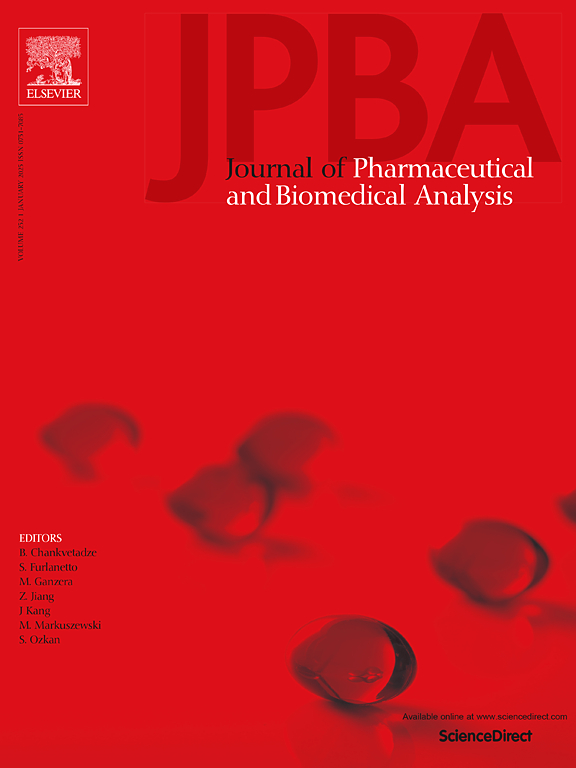Detection of 11-nor-9-carboxy-hexahydrocannabinol (HHC-COOH) as metabolite of both hexahydrocannabinol (HHC) and Δ9-tetrahydrocannabinol (Δ9-THC) in routine forensic samples
IF 3.1
3区 医学
Q2 CHEMISTRY, ANALYTICAL
Journal of pharmaceutical and biomedical analysis
Pub Date : 2025-03-22
DOI:10.1016/j.jpba.2025.116833
引用次数: 0
Abstract
Hexahydrocannabinol (HHC) is a phytocannabinoid that has been known since 1940, but has only recently appeared on the recreational drug market. For the analytical detection of HHC consumption, a GC-MS method for the quantification of cannabinoids was extended and validated by adding (9S)-HHC, (9 R)-HHC, (9S)-carboxy-HHC (HHC-COOH) and (9 R)-HHC-COOH. Both HHC and HHC-COOH epimers were chromatographically separated and the validation data were convincing for forensic toxicological routine analysis. This method was used to analyze 599 serum samples from forensic cases where cannabis use was suspected. Results were classified into three consumption groups: Δ9-THC only (n = 574), Δ9-THC and HHC (n = 19), and HHC only (n = 6). The concentration in serum was between 0.15 ng/mL to 14.4 ng/mL for (9 R)-HHC and 0.14 ng/mL to 5.76 ng/mL for (9S)-HHC. In all HHC positive samples, (9 R)-HHC-COOH could be detected in concentrations between 1.0 and 314 ng/mL. Of note, in the cases that tested positive for Δ9-THC only, (9 R)-HHC-COOH was also unambiguously detected in serum samples as a metabolite not only of HHC but also of Δ9-THC. In six urine samples of THC users that were examined by GC-MS and LC-MS/MS both epimers of HHC-COOH and their glucuronides could be detected. (9S)-HHC-COOH was the predominant epimer in urine which was not detected in serum. Results suggest that detection of HHC-COOH epimers alone cannot prove prior HHC consumption. With the data presented, we tentatively recommend a cut-off of 30 % of the (9 R)-HHC-COOH/THC-COOH ratio in serum to distinguish the intake of both substances from the intake of Δ9-THC alone.
求助全文
约1分钟内获得全文
求助全文
来源期刊
CiteScore
6.70
自引率
5.90%
发文量
588
审稿时长
37 days
期刊介绍:
This journal is an international medium directed towards the needs of academic, clinical, government and industrial analysis by publishing original research reports and critical reviews on pharmaceutical and biomedical analysis. It covers the interdisciplinary aspects of analysis in the pharmaceutical, biomedical and clinical sciences, including developments in analytical methodology, instrumentation, computation and interpretation. Submissions on novel applications focusing on drug purity and stability studies, pharmacokinetics, therapeutic monitoring, metabolic profiling; drug-related aspects of analytical biochemistry and forensic toxicology; quality assurance in the pharmaceutical industry are also welcome.
Studies from areas of well established and poorly selective methods, such as UV-VIS spectrophotometry (including derivative and multi-wavelength measurements), basic electroanalytical (potentiometric, polarographic and voltammetric) methods, fluorimetry, flow-injection analysis, etc. are accepted for publication in exceptional cases only, if a unique and substantial advantage over presently known systems is demonstrated. The same applies to the assay of simple drug formulations by any kind of methods and the determination of drugs in biological samples based merely on spiked samples. Drug purity/stability studies should contain information on the structure elucidation of the impurities/degradants.

 求助内容:
求助内容: 应助结果提醒方式:
应助结果提醒方式:


